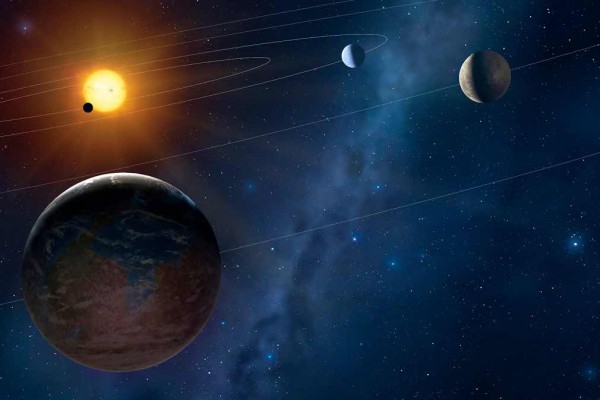Dutch-based researchers have a radical plan for any near-Earth asteroid that can be hollowed out by asteroid miners. They are going to turn it into a huge starship that can travel between stars, an article in the Daily Mail states.
This generational ship would be big enough to hold entire generations of crew and passengers during the many decades it will take for their slower-than-light space ark to reach their destination.
The Delft University of Technology (TU Delft) team calls their design the “Evolving Asteroid Starship.” Their plan calls for the construction of a city-sized structure on the asteroid that can support a large, genetically viable population.
In a video of their proposed starship, propulsion is provided by an array of massive rockets pointed at multiple directions. The crew can maneuver their mobile asteroid base in any direction using these rockets.
The European Space Agency (ESA) is assisting the TU Delft team with regards to the extensive life support systems that will keep the crew of the Evolving Asteroid Starship alive. Angelo Vermeulen, leader of the project, says the technology must be able to sustain itself over the long trek to another star system.
The life support systems must also be able to adapt to any challenge or crisis that may take place. (Related: NASA’s OSIRIS-REX mission will examine samples from an asteroid, seeking clues to the origin of life.)
Asteroid starship must be self-sufficient and evolve like a living organism
The TU Delft researchers are not just limiting themselves to developing the necessary technology. They are also considering the biological and social factors that will come into play during the epic journey.
They say the starship will be on its own during the trip, which could take as long as a century. There would be no returning to Earth for assistance, and neither would Earth be able to send help in time.
The former asteroid would need to evolve like a living organism, the researchers stress. It must be able to exploit any sources that it comes across in the vastness of space, such as other asteroids.
In an act that might seem like cannibalism, the starship can mine fuel and raw materials from these asteroids to keep itself running. The materials will be fed to 3D printers aboard the ship, which will print new parts to maintain existing structures and build new ones for a growing population.
Scaled-up MELiSSA regenerative life support system could support generations of starship crew
Such a regenerative life support system would resemble MELiSSA, the Micro-Ecological Life Support System Alternative program of the ESA that is undergoing development by experts from 11 nations.
MELiSSA replicates the capabilities of aquatic ecosystems found in nature. It is intended to turn carbon dioxide and organic waste into usable oxygen, food, and water.
ESA member nation Spain hosts a MELiSSA pilot plant in its Autonomous University of Barcelona. The prototype system is airtight, has multiple compartments, and is designed to be comfortable for its “crew” of rats.
A “bioreactor” converts light into energy. Algae in the reactor produce oxygen for the rats, which provide carbon dioxide for the plants in return. The entire system is rated for months of continuous operation.
The MELiSSA’s bioreactor and its payload of oxygen-producing algae have already been tested aboard the International Space Station.
“The MELiSSA concept gives the starship its baseline life support,” said Vermeulen. A biologist and artist, the TU Delft researcher is knowledgeable about the subject of life support. He commanded the HI-SEAS Mars analog habitat in Hawaii in 2013.
“Meanwhile, we’re also integrating other technologies such as 3D printing and asteroid mining into our design,” he added.
Read about other mind-boggling ideas about traveling to distant stars at Space.news.
Sources include:
DailyMail.co.uk
MelissaFoundation.org















